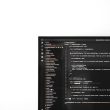Have you ever faced the frustration of trying to install essential geospatial libraries only to be met with cryptic error messages? If you’re diving into data analysis or GIS projects, installing GDAL or OSGeo within a virtual environment can feel like navigating a maze. This article will unravel the common pitfalls associated with installation issues and provide you with clear, actionable steps to overcome them. By the end, you’ll have the tools to set up your environment seamlessly and get back to focusing on your data.
Understanding Virtual Environments in Python
Virtual environments in Python are a cornerstone of modern development, enabling developers to create isolated spaces for their projects. This isolation is crucial, especially when working with libraries that may have conflicting dependencies, such as GDAL or OSGeo. By encapsulating project requirements within a virtual environment, you can ensure that changes made in one project do not inadvertently affect others. This not only simplifies dependency management but also enhances reproducibility, making it easier to share projects with colleagues or deploy them in production.
However, navigating virtual environments can sometimes lead to unexpected hurdles. For instance, while setting up GDAL in a .venv, you might encounter installation errors that stem from system-level dependencies rather than Python package conflicts. Understanding the underlying architecture of your virtual environment—such as how it interacts with the system’s Python interpreter and installed packages—can be invaluable. Leveraging tools like `pip`, `pipenv`, or `poetry` alongside virtual environments can streamline the installation process and help troubleshoot issues effectively, providing a more robust framework for managing complex dependencies.
In this context, it’s essential to recognize that the power of virtual environments extends beyond mere isolation; they also serve as a learning platform. Experimenting with different configurations, library versions, and even alternative Python interpreters within a virtual environment allows developers to gain deeper insights into the behaviors of their applications. Embracing this iterative approach not only fosters a more profound understanding of Python’s ecosystem but also equips you with the skills to tackle similar challenges in future projects.

Common Errors During GDAL Installation
One common error during GDAL installation stems from incompatible dependencies. Many users overlook the importance of matching GDAL versions with specific Python and OS versions, which can lead to frustrating compatibility issues. For instance, if you’re using a Python version that’s too new or too old for the GDAL version you’re trying to install, you might encounter a myriad of errors that can seem cryptic at first glance. A proactive approach is to consult the GDAL documentation or community forums, where you’ll often find shared experiences that highlight which combinations work best.
Another frequent pitfall is failing to properly configure environment variables. GDAL relies on several external libraries, and if these paths are not set correctly, the installation can fail silently or produce misleading error messages. Users should ensure that paths to dependencies such as `proj`, `geos`, and `libtiff` are included in their system’s environment variables. This attention to detail can save hours of debugging time and frustration. Utilizing tools like `gdalinfo` after installation can also help verify that everything is set up correctly, providing immediate feedback on whether your installation was successful or if further adjustments are needed.
Troubleshooting GDAL Installation Issues
When tackling GDAL installation issues within a `.venv`, one common pitfall is the mismatch between the GDAL version and your Python environment. Ensure that the GDAL binaries are compatible with the Python version in use; often, using an outdated GDAL version can lead to cryptic errors that frustrate even seasoned developers. One effective approach is to explicitly specify the GDAL version during installation, leveraging `pip install gdal==<version>` where `<version>` matches your requirements. This not only streamlines the installation process but also helps avoid dependency conflicts that arise from newer libraries.
Additionally, don’t underestimate the importance of system-level dependencies. GDAL relies on various external libraries that need to be present for successful compilation and execution. On Unix-like systems, you might find that installing system packages like `libgdal-dev` can resolve many headaches. Conversely, on Windows, consider using precompiled binaries or conda environments, which can simplify dependency management. Lastly, consult the GDAL documentation and community forums; they are treasure troves of troubleshooting advice where you can find solutions tailored to specific operating systems or configurations. Engaging with these resources can transform a frustrating installation experience into a learning opportunity, empowering you with knowledge for future projects.

Setting Up .venv for GDAL
Setting up a virtual environment using `.venv` for GDAL can seem daunting, especially when faced with installation errors that disrupt your workflow. However, the power of a clean, isolated environment cannot be overstated. When you create a `.venv`, you’re not just isolating your project dependencies; you’re also safeguarding your system’s integrity by avoiding conflicts with global packages. This is particularly crucial for libraries like GDAL, which often require specific versions or additional system dependencies that might clash with other projects.
To kickstart your setup, ensure you have the necessary system libraries installed. On Ubuntu, for instance, you might need to run `sudo apt-get install gdal-bin libgdal-dev` before creating your virtual environment. Once those prerequisites are in place, activate your `.venv` and proceed to install GDAL using pip. This approach helps streamline the installation process and minimizes errors related to missing dependencies. Moreover, consider leveraging tools like `pip-tools` to manage your requirements more effectively, ensuring that all your packages are compatible and reducing the likelihood of versioning issues down the line.
Finally, don’t underestimate the value of community forums and documentation when troubleshooting installation hurdles. Often, other developers have encountered similar challenges and shared their solutions. Engaging with these resources not only enhances your understanding but also connects you with a network of practitioners who can offer insights and support. Embracing this collaborative spirit can turn what might seem like a frustrating installation process into an opportunity for learning and growth in your data processing journey with GDAL.
Installing GDAL on Different Operating Systems
When it comes to installing GDAL across various operating systems, the approach can differ significantly, often leading to unique challenges and solutions. For Windows users, the process can be streamlined by utilizing OSGeo4W, a robust installer that packages GDAL along with its dependencies. This method not only simplifies the installation but also ensures compatibility with other GIS tools. Alternatively, for those who prefer a more hands-on approach, using conda can be an effective way to manage environments and dependencies without the hassle of manual configurations.
On macOS, Homebrew emerges as the go-to solution for many developers. With just a few terminal commands, users can install GDAL and its related libraries effortlessly. However, it’s essential to pay attention to the GDAL version, as discrepancies can lead to compatibility issues with Python packages. Linux users often find themselves in a more flexible environment; package managers like apt or yum allow for straightforward installations, but compiling from source is also an option for those seeking the latest features or optimizations tailored to their specific use cases. Regardless of the platform, embracing the nuances of each system can transform a daunting installation process into a rewarding experience that lays the groundwork for powerful geospatial analysis.

Conclusion and Final Thoughts on Installation
In conclusion, navigating the installation of GDAL or OSGeo within a virtual environment can often feel like traversing a maze. However, this challenge is not insurmountable; it opens the door to a deeper understanding of how dependencies interact within Python environments. Embracing the troubleshooting process can ultimately enhance your coding skills and familiarize you with essential tools that are pivotal in geospatial analysis.
Moreover, consider the broader implications of mastering these installations. Each successful setup not only empowers your current projects but also equips you with the knowledge to tackle similar issues in future endeavors. As you persist through errors and configurations, you cultivate resilience and adaptability—qualities that are invaluable in the ever-evolving landscape of software development. Embrace these moments as learning opportunities, and remember that every hurdle crossed brings you one step closer to becoming proficient in handling complex geospatial data.






